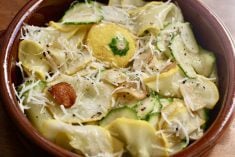We will remember this summer as one of transition. Our twin boys graduated from Grade 12 in June.
By the first of July, Mike had an apartment in Saskatoon and a job to support the rent. He will be attending the University of Saskatchewan in the fall.
Ray will be heading to Briercrest Bible College at Caronport, Sask. for a one year Link program, a transition from high school to post-secondary education. He will be living in a dorm so there is only personal items to move for him. For Mike we are pulling out the boxes of dishes and pots and pans that were hand-me-downs or castoffs saved for this time.
Read Also

Farm auctions evolve with the times
Times have changed. The number of live, on-farm auctions is seeing a drastic decline in recent years. Today’s younger farmers may actually never experience going to one.
At the other side of the generation scale, my husband’s mother moved to a nursing home this summer so we are cleaning out her apartment and dividing dishes, furniture and linens among the children and grandchildren.
The physical and practical sides of all these moves are the accumulating and dispersing of material items. There is also an emotional side. For our immediate family it is the end of a stage of life where the family all lives together and the dependent children are at home. For grandma, it is the loss of her independence. As the sandwich generation we are experiencing a lot of emotional tugs. We are trying to maintain a sense of humor amidst the confusion and boxes and we are striving to divide things evenly to avoid hurt feelings in the future.
Brunch recipe
My neighbor, Gay Hunt, was looking for brunch ideas for a family reunion. She used this recipe she received from her niece, Lynda Green. I tried a sample and it was delicious.
Blueberry french toast
12 slices day-old 12
bread, crust removed
2 8-oz./250-g 2
packages light cream
cheese
1 cup blueberries 250 mL
or saskatoons, fresh
or frozen
12 eggs 12
2 cups milk 500 mL
1Ú3 cup maple or 75 mL
pancake syrup or
honey
Cut the bread in one-inch (2.5-cm) cubes and put half in a 9 x 13 inch (23 x 33 cm) greased dish. Cut cream cheese into same size of cubes and place over bread. Top with berries and remaining bread. In large bowl beat eggs and add milk and syrup. Mix well and pour over the bread and cheese mixture. Cover and chill for eight hours or overnight. Cover with foil and bake at 350 F (180 C) for 30 minutes. Uncover and bake for 30 more minutes or until brown and the centre is set.
Sauce
1 cup sugar 250 mL
1 cup water 250 mL
1 tablespoon 15 mL
butter or margarine
2 tablespoons 30 mL
cornstarch
1 cup blueberries 250 mL
or saskatoons,
fresh or frozen
In saucepan combine sugar and cornstarch. Add water and bring to a boil for three minutes, stirring constantly. Stir in berries, reduce heat and simmer for 10 minutes until berries burst. Stir in butter until melted. Put on top or serve on the side. Serves six to eight. This can be made a day ahead and served cold. It would also make a nice dessert.
Making dill pickles
Dear TEAM: During the summer of 1998 you published a recipe for dill pickles which had been published many years before in a column by Emmie Oddie. The recipe had been compiled by a group of home economists. I made 25 quarts of dill pickles using this recipe, and the pickles had a superior flavor and were much crisper than the dills made from my usual recipe. Everyone who has tasted these pickles has requested the recipe. Unfortunately, I have misplaced or lost the recipe and I am writing to request a copy from your files. – K.A., Erskine, Alta.
Dear K.A.: Since you have received so many requests for this recipe we thought that others may want this recipe again as well.
Classic dill pickles
15 four-inch 15
(10 cm) cucumbers
11Ú2 cups pickling 375 mL
vinegar
41Ú2 cups water 1.12 L
1Ú3 cup pickling 75 mL
salt
1Ú3 cup sugar 75 mL
For each jar:
1 clove garlic 1
1 sprig fresh dill 1
or
1Ú2 teaspoon dill 2 mL
seed
Wash cucumbers and remove blossom ends.
Fill water bath canner with hot water. Place three one-quart (one-litre) preserving jars in canner over heat to sterilize. Boil jars at least 15 minutes. Place metal snap lids in boiling water and boil five minutes to soften sealing compound. Keep hot until ready to use.
Combine vinegar, water, pickling salt and sugar in a large enamel or Corningware Dutch oven and bring to a boil.
Pack cucumbers firmly into hot sterilized jar, leaving a three-quarter inch (two-cm) headspace. Add one clove of garlic and sprig of fresh dill or 1Ú2 teaspoon (two mL) dill seed in each jar. Ladle brine over cucumbers. Leave a quarter inch (six mm) headspace.
Clean jar rim. Centre metal snap lid. Apply screwband just until fingertip tight. Place in canner. Repeat with remaining jars. Adjust boiling water level to one inch (2.5 cm) above jar tops. Cover canner. Begin process time immediately, and process 20 minutes in a simmering water bath.
Remove jars from canner. Set upright and space apart out of drafts to cool. Cool 24 hours. Test for seal. (Sealed lid curves downward in the centre.) Wipe jars, label and date. Store in cool, dark location. Yield: Three one-quart (one L) jars.
This recipe was developed and tested by Food Pro’92 in Saskatoon.
Tender fruit season
Peaches, pears and plums are in season during July, August and September. Due to their tenderness they require special handling, care and storage to maintain fruit quality at home. The Ontario Tender Fruit Producers Marketing Board has handling advice.
Peaches: Select peaches according to the base color. It’s not necessarily the blush that indicates the fruit’s ripeness – peaches with a creamy or yellow base color are softer and juicer. Yellow stem ends indicate ripe fruit. Once home, always remove peaches from their container and sort according to ripeness. Ripe fruit (fragrant and slightly soft to the touch) should be enjoyed immediately, or placed in the refrigerator. Unripe peaches should also be refrigerated. Anticipate your peach needs and bring the amount needed out to room temperature for ripening, at least 24 hours prior to use.
For easy peeling, dip peaches in boiling water for 30-60 seconds, then place in ice water. Slip skins off by hand. Slice peaches along the seam, twist and remove pit. To prevent sliced peaches from browning, mix with lemon juice or ascorbic acid crystals as soon as possible.
Freeze peaches after peeling, pitting and slicing. To four cups (one L) of sliced peaches, add 1Ú2 cup (125 mL) granulated sugar and 1Ú4 teaspoon (one mL) ascorbic acid. Pack into plastic containers, leaving a one-inch (2.5-cm) headspace. Top with a sheet of crumbled wax paper and seal tightly. Frozen peaches can be stored for one year.
Pears: Select pears that are firm. Don’t be misled by slight scarring or blemishes, which do not affect quality. Pears ripen at room temperature in three to seven days. Pears should be fully ripe when eating fresh. Use firm pears for salads, cooking or grilling. To core, cut in half from stem to base. Using a spoon or melon-baller, scoop out the core. Peel, if desired. Prevent cut surfaces from browning by coating flesh with lemon juice.
Freezing pears is not recommended.
Plums: Select plums that have good color and yield to slight pressure. Ripen plums at room temperature. Plums ripen quickly, and spoil quicker than other tender fruits. Enjoy ripened fruit immediately, or cover and store in the refrigerator for up to five days.
To slice, cut around seam of freestone varieties, twist and lift out pit. Peel plums by dipping in boiling water for 30-60 seconds, remove and place plums in cold water. Slip skins off.
Freezing plums is not recommended.
Other handy fruit tips
To ripen quickly, place fruit in a brown paper bag at room temperature. Always wash tender fruit before using, not before storing.
One pound (500 g) yields: three peaches, three pears, 10 plums.
Sliced fruit: one peach yields about 1Ú4 cup (50 mL), one pear yields about 3Ú4 cup (175 mL), two plums yield about 1Ú3 cup (75 mL).
For more information go to www.ontariotenderfruit.com.
If you have questions while making jams, jellies and preserves, contact the CERTO Hotline at 1-800-268-6038. I have used their service in the past and they have been very helpful.
No-cook peach-kiwi jam
CERTO has developed this interesting fruit combination jam.
23Ú4 cups peeled, 650 mL
pitted and finely
chopped peaches
11Ú4 cups finely 300 mL
chopped kiwi
31Ú4 cups sugar 775 mL
1 box CERTO light 1
fruit pectin crystals
Measure prepared fruits into a large bowl. Measure sugar and set aside. Combine fruit pectin crystals with 1Ú4 cup (50 mL) of the measured sugar. Gradually add to fruit, stirring well. Let stand for 30 minutes, stirring occasionally. Add remaining sugar and continue to stir for three minutes until most of the sugar is dissolved.
Pour into clean jars or plastic containers. Cover with tight lids and let stand at room temperature until set (may take 24 hours). Store in freezer. If used within three weeks, jam may be stored in refrigerator. Makes six cups (1.5 L).














